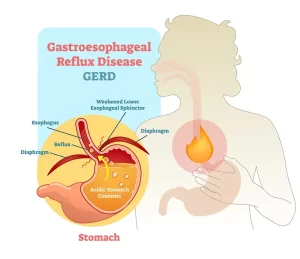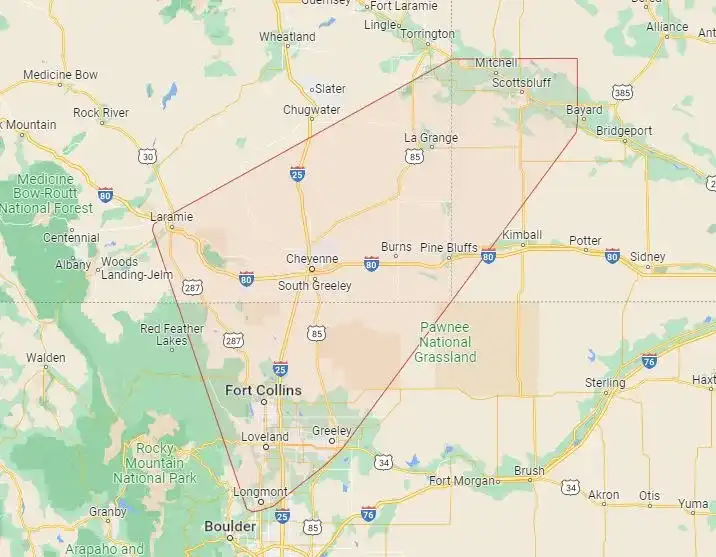Anti-reflux surgery is for the treatment of gastroesophageal reflux disease (GERD). Commonly known as “heartburn,” the disease can cause symptoms such as a burning sensation in your chest (especially after eating or at night), chest pain, difficulty swallowing, regurgitation of food or sour liquid, and/or the sensation of a lump in your throat.
This condition is attributed to stomach acid that regurgitates into the esophagus from the stomach. Treatment of this condition is important not only for symptom management but also because the chronic acid reflux into the lower esophagus causes damage that can lead to esophageal cancer in some patients.
The regurgitation is caused by the failure of the lower esophageal sphincter (LES), which acts as a valve between the esophagus and stomach, to close correctly. Some of the causes of gastroesophageal reflux disease include obesity, smoking, alcohol consumption, fatty and spicy foods. Hiatal hernias are commonly associated with the development of GERD.
Lifestyle changes
This is a critical step in the treatment of GERD and often overlooked. Obesity is a major contributing factor and weight loss is often mandatory prior to consideration of surgical options. If weight loss is unsuccessful with diet and exercise, bariatric surgery (weight loss surgery) is often a better option than anti-reflux surgery. In addition to weight loss, avoiding eating before bed, and avoiding tobacco and alcohol are often successful in relieving symptoms of GERD.
Medications
Initial treatment with medications to reduce acid production in the stomach is successful in the majority of patients.
Robotic Surgical Procedures
Robotic Nissen Fundoplication
A robotic-assisted procedure that involves several small incisions in the abdomen. A tiny video camera is inserted through one incision and the surgeon uses special surgical tools through the other incisions to repair the esophagus.
Robotic Hiatal Hernia repair
A robotic-assisted procedure that inserts a laparoscope, which is a thin tube with a light and a camera through one incision and the surgeon uses special surgical tools through the other incisions in the abdomen to repair the hernia.

The development of anti-reflux surgery from open to a minimally invasive laparoscopic approach has resulted in reduced postoperative pain and shorter procedure-related length of stay without compromising patient satisfaction. The transition to surgical treatment using robotic surgery techniques allows for superior visualization by integrating 3D visualization, enhanced dexterity by increasing maneuverability of applied instruments, and greater precision as compared to traditional laparoscopic procedures.
Robotic surgery does not call for a different preoperative workup. The procedure provides robot-assisted, anti-reflux surgery with magnetic sphincter augmentation to prevent reflux and repair hiatal hernias. The procedure helps reinforce the lower esophageal sphincter (LES) so that it prevents food and acid from rising and reinforces a hiatal hernia repair.
Patient benefits of robotic surgery include:
- Reduced pain and discomfort
- Less bleeding
- Less scarring
- Faster recovery
- Reduced incidence of gas bloat and dysphagia
- Symptom resolution
Robotic anti-reflux operations have been consistently reported to be safe. The number of complications is minimal and comparable to laparoscopic surgery. Dr. Tierney has been using robotic surgical technology for many years.
Before surgery
The steps followed before surgery are:
- An office visit for surgical consultation where a comprehensive history and physical exam is performed.
- Completion of clinical tests for workup and staging.
- Multidisciplinary tumor board review for an expert recommendation regarding treatment strategy.
After surgery
The type of surgical procedure done determines the kind of post-surgery care required. Post care after a surgical operation involves:
- A brief admission to the ICU is sometimes required for complex procedures such as a whipple procedure. Recovery then continues in the hospital ward for another three to five days. Procedures performed robotically typically have a faster recovery and can expect discharge from the hospital one or two days earlier than after open procedures.
- The goals of postoperative care include: monitoring for and intervening on any complications that can occur, awaiting the resumption of normal bowel function, maintaining adequate hydration and nutrition, physical and occupational rehabilitation, and providing adequate pain control. Once these measures are met, the patient will be discharged from the hospital. Post-operative follow-up will be scheduled one week from discharge with Dr. Tierney.



